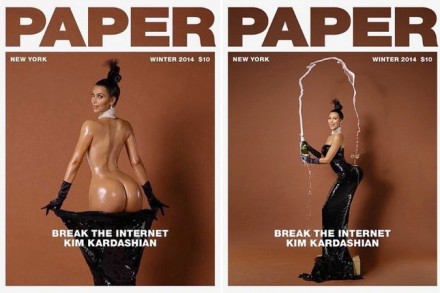Last month my friend and classmate, Kaylene, delivered a powerful speech about the over use of Photoshop in fashion magazines. She related it to her personal experience being convinced she should model when she was a teenager. Kaylene later learned how to use Photoshop to drastically alter images when she was in photography school. She believes firmly that there should be regulations on Photoshop usage.
It’s common knowledge that Photoshop is used heavily by the advertising industry, especially in fashion magazines. But how much is too much when it comes to re-touching and perhaps, re-configuring a model’s face and physique? I don’t have an answer for that.
I think it’s extremely interesting that some countries have taken action to try to stop the mis-representation of the female (and male) body in publications. In 2012, Israel enacted a two-part law that bans using underweight models and limits the alterations that can be made on Photoshop and other digital media editing software.
I don’t know exactly how this would be policed because, I mean, how do you determine if someone is too altered? What’s the line that has to be crossed? Do you need to supply the original, un-edited photo along with the edited photo to a regulatory body?
As I was in the process of writing this blog post, the following photo “broke the Internet.” I’m not going to get into all my issues with Kim’s photo shoot for Paper Magazine. If you want an interest read that goes beyond what I’ll be discussing, check out this article from USA TODAY. Similar articles like this one have actually been taken down from other sites…
Maybe I’m making an assumption here, but these images look mighty Photoshoped, granted most magazine cover models do. But this seems next level to me. Beyond the hypersexualization of the female body, this is (probably) not an accurate depiction of Kim’s body. I suppose I could be wrong, though.
Although 2014 has been declared “the year of the booty,” thanks to some bootylicious pop stars and celebs, promoting a specific body type is still perpetuating what is, or isn’t, a desirable body type. What happens when 2015 is declared the year of the flat butt?… or whichever idealized body (part) is en vogue. I’m not into it. And I’m really not into this photo shoot Kim did with Paper Magazine.
…
After my photography class last week, I saw first hand how easy it is with a few clicks to completely skew facial features. My first thought after learning a few Photoshop tools to “enhance” the head shots we took was, “I can have defined cheekbones!” Guilty as charged, Breanne.
Learning these simple tricks amplified my desire to have what I don’t have. It often seems like it’s that way, especially when I was a tween/teen. I used to despise my curly hair and take a clothing iron to it. Because poker-straight hair was much cuter. I’m glad that phase ended at the ripe age of 16.
I don’t think that the glossy (overly) Photoshopped ads in fashion magazines necessarily cause low self-esteem in their viewers. But they certainly are not helping promote body positivity. Similarly to the claim that video games cause gamers to become violent, I don’t think that over-Photoshopped models are the root cause of low self-esteem or poor body image. There are other factors that make young women susceptible to poor body image.
I’m not trying to under-estimate the negative effect that these images play on promoting idealized body types. They do play a role.
Do I think that there should be regulations on how Photoshop can, or can’t be used? It depends. I’m on the fence on this issue. In the case of the Kim Kardashian photos I posted above, I think Photoshop has been used to a ridiculous extent. And I won’t even get into the other messages these photos send.
I agree with using Photoshop to blur out pimples or reduce the dark circles under one’s eyes. But I’m not sure how far is too far. What I do believe is that Photoshop and image editing software, and even filters used on Instagram, create an idealized image of one’s self. Everyone wants to look–and feel–their best. And why not obscure that raging pimple on your forehead if you can?
I want to know what you think. Should there be regulations on how Photoshop and image-editing software can be used?
